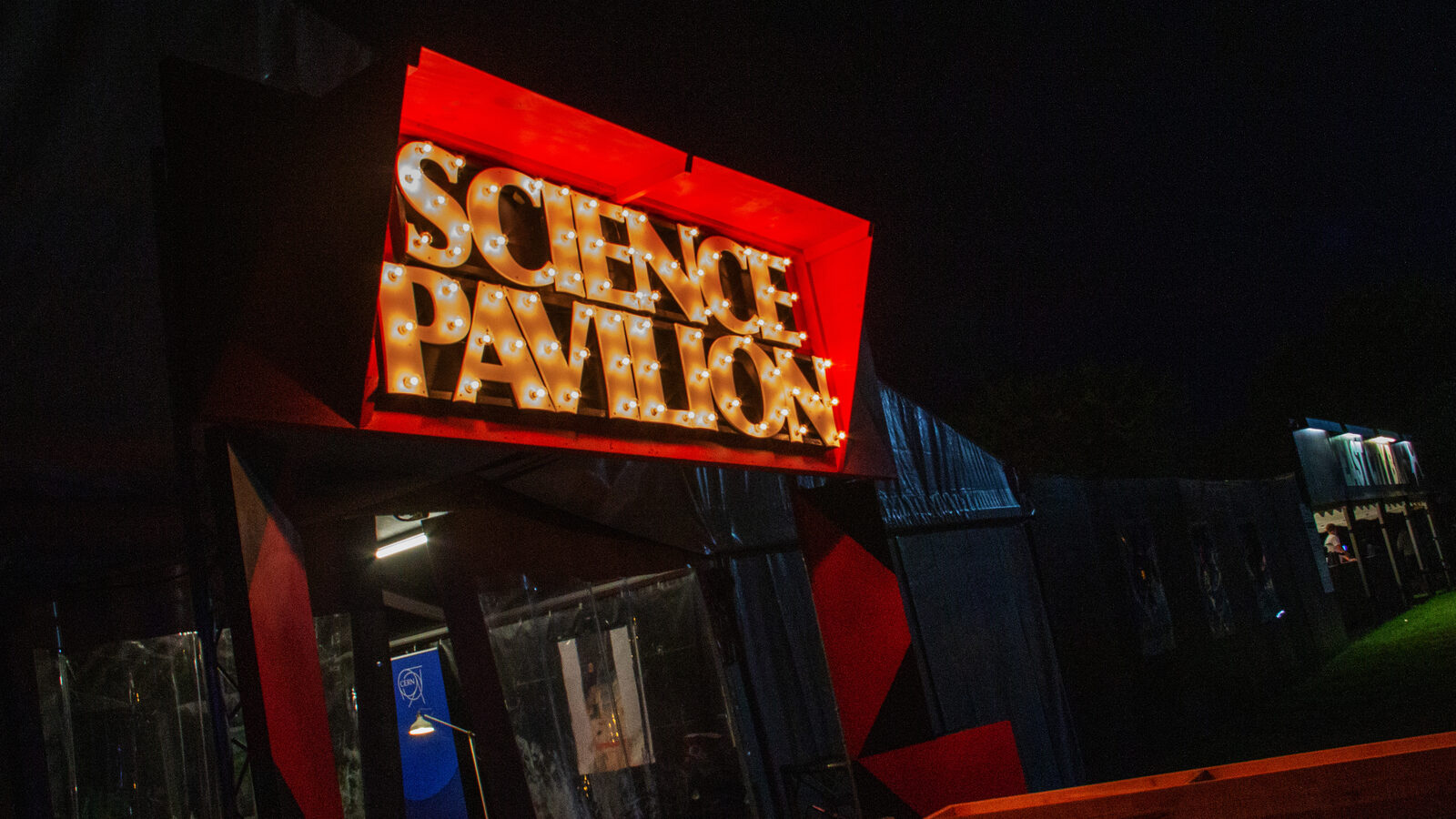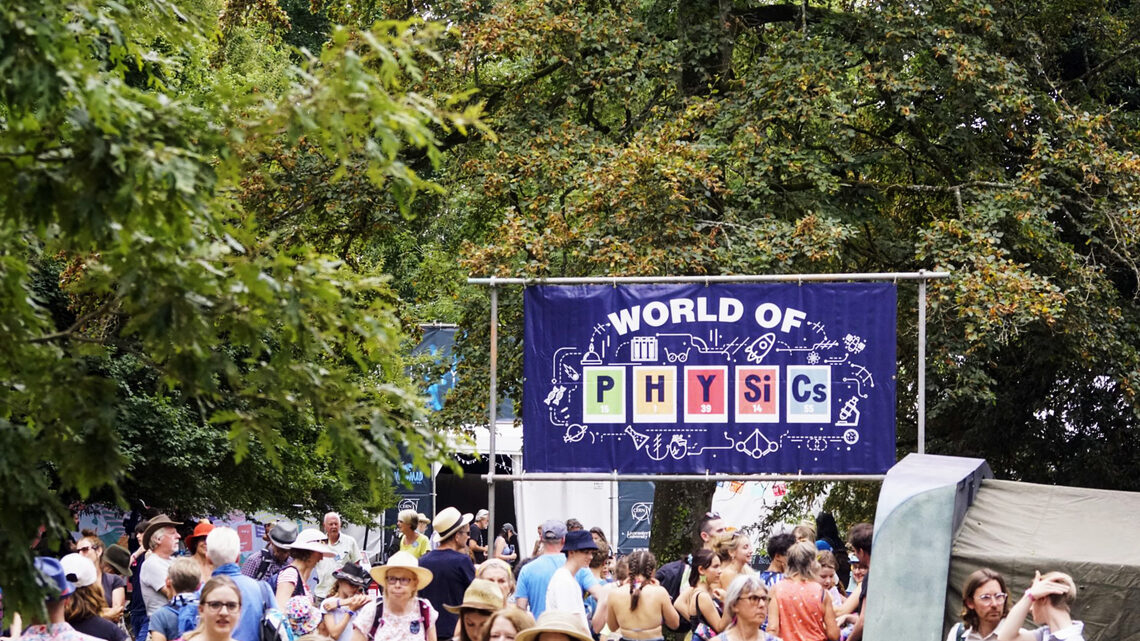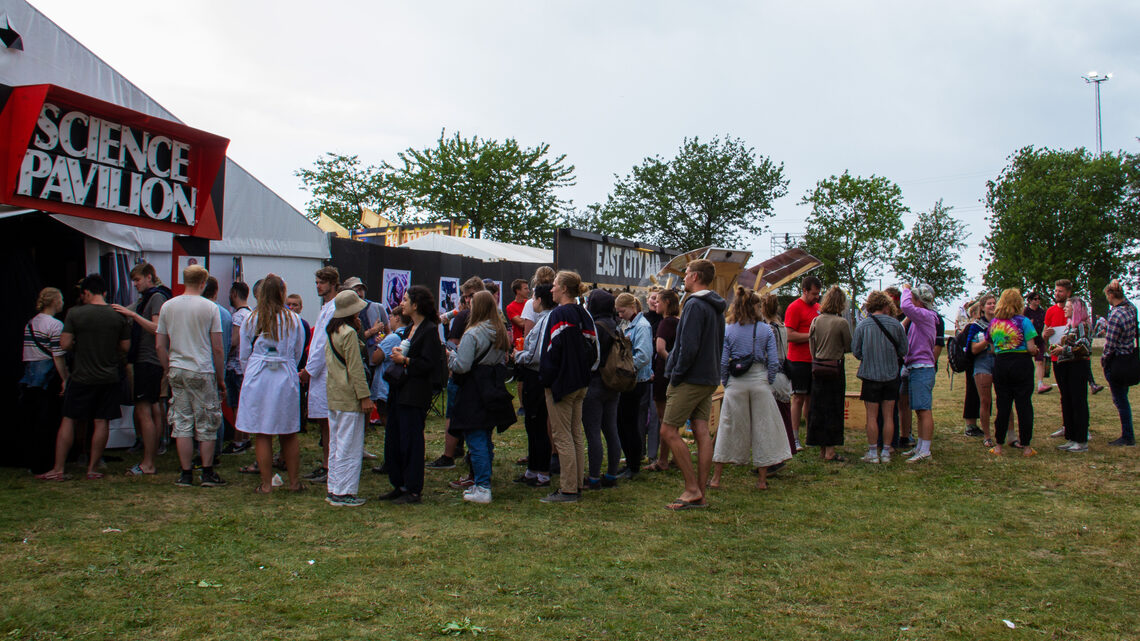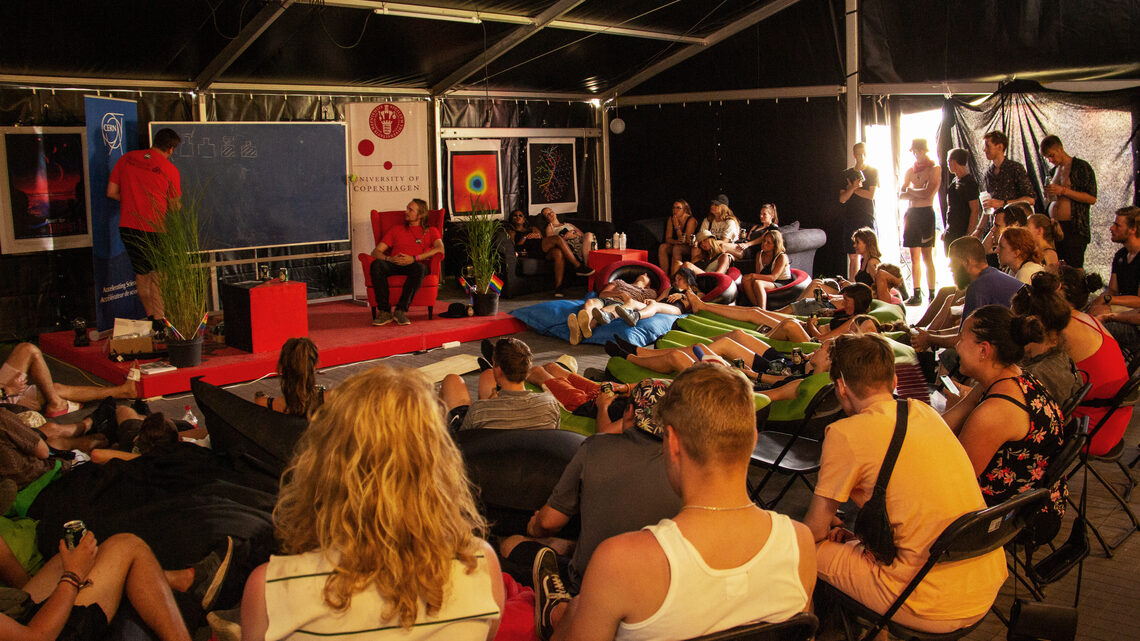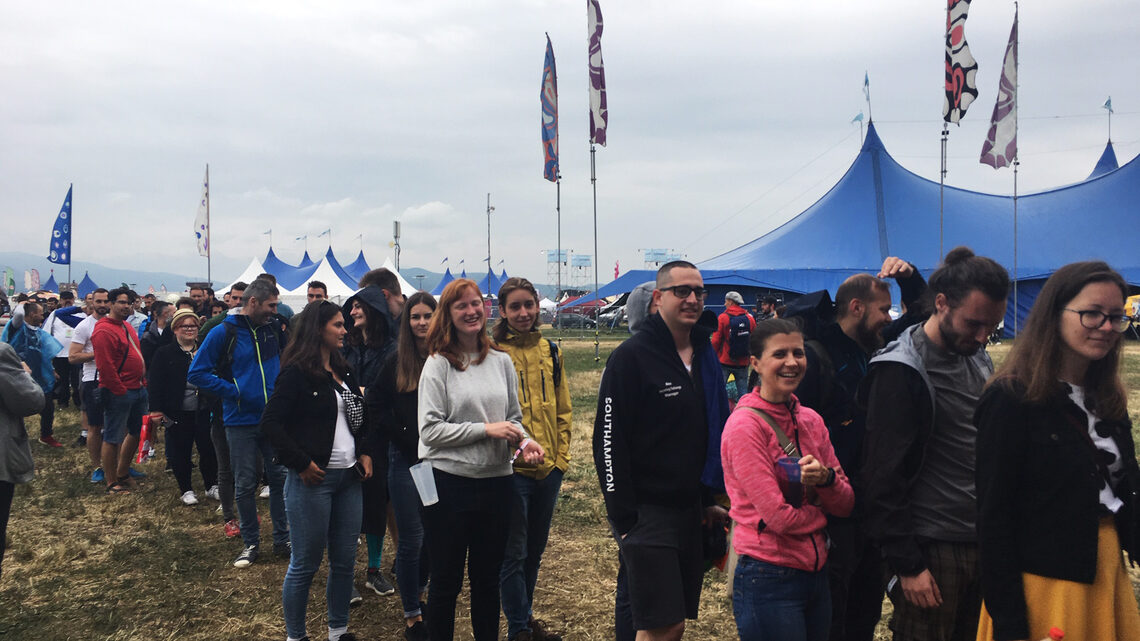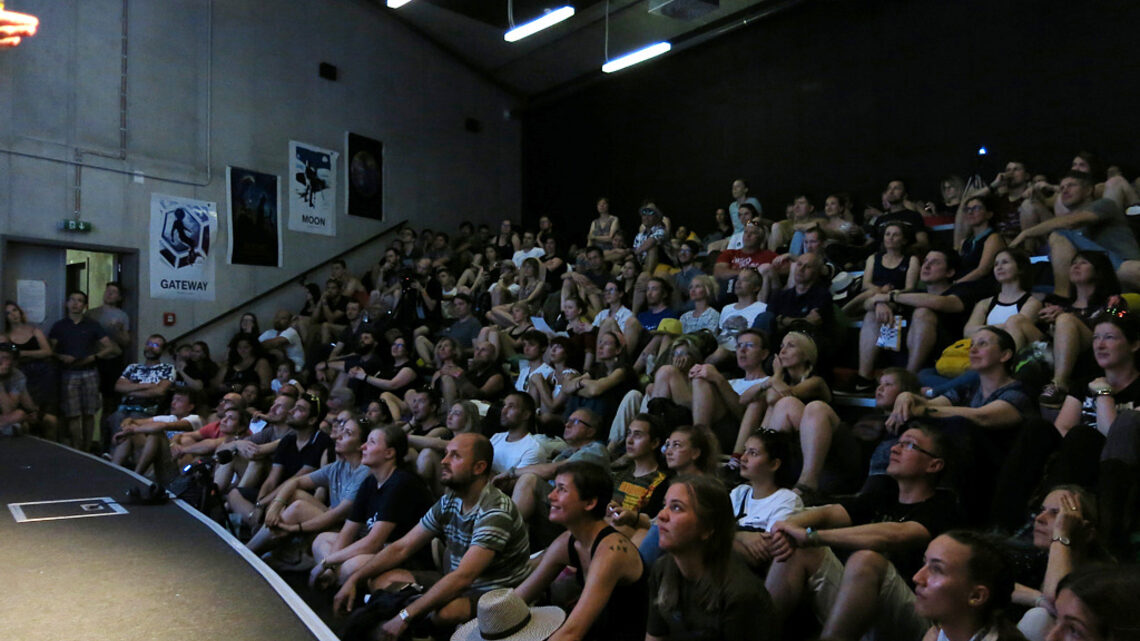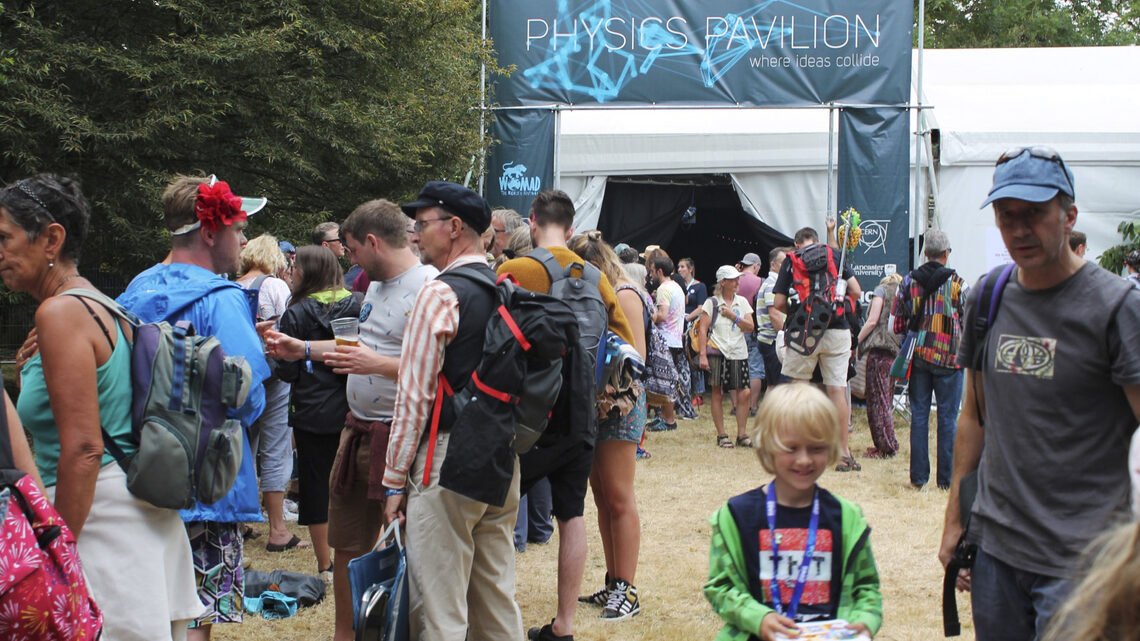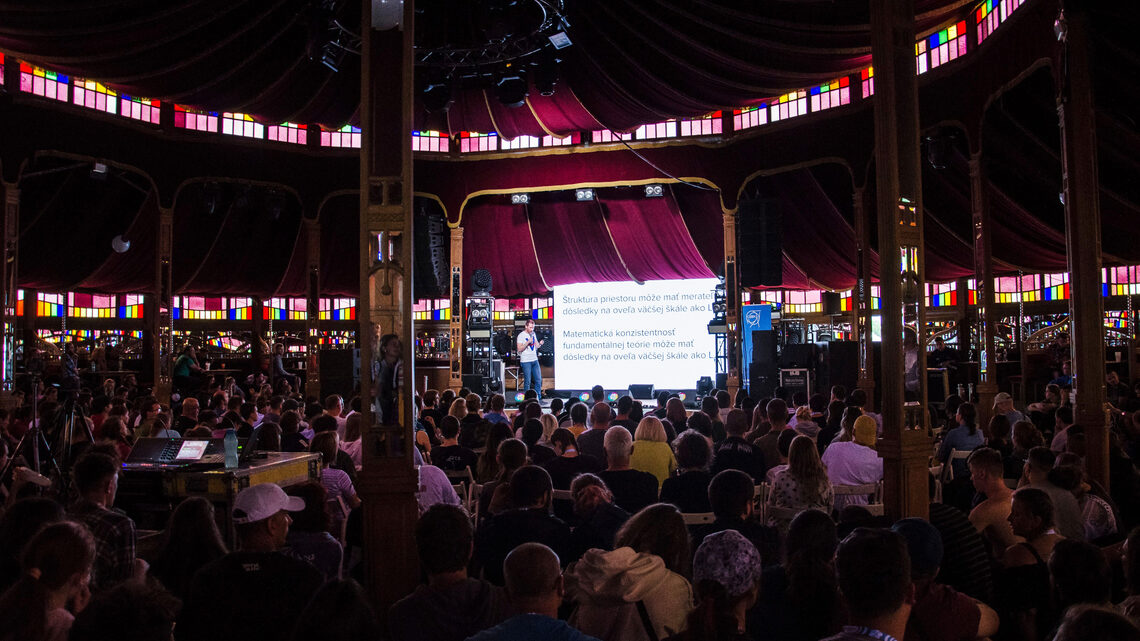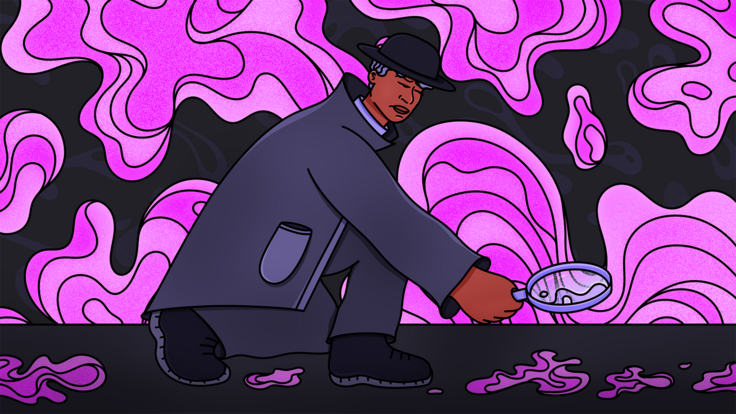It all started with Peter Gabriel.
CERN event organizer Connie Potter knew that the former lead singer of the band Genesis was interested in science and technology, so she invited him as a special guest to tour the European accelerator laboratory.
Gabriel was unavailable, but his chief collaborator, Mike Large—who is a producer, a studio technician and designer, and a trained astrophysicist—asked if he could tour in Gabriel’s place. Potter obliged and, afterward, Large suggested they continue the exchange by inviting CERN scientists to Gabriel’s annual music festival, the World of Music, Arts and Dance, or WOMAD.
Potter says she was skeptical: “Why would people at a music festival come to a science tent?”
With the encouragement of Large and two of Potter’s colleagues—Chris Thomas of Iowa State University in the United States (who passed away in October 2022) and Roger Jones, head of the physics department at Lancaster University in the United Kingdom—Potter decided to give it a try.
That’s how she, Thomas, Jones and a group of volunteer physicists from CERN and the IOP Institute of Physics in the UK ended up creating a “Physics Pavilion” at the 2016 WOMAD festival at Charlton Park, Wiltshire, UK.
As Large had predicted, the pavilion was hugely popular: Over the course of three days, amid the festival’s dozens of musical acts, poetry readings, cooking classes and yoga lessons, about 3,500 visitors took time to learn about physics.
Potter, Thomas and Jones eventually gave their festival outreach group a name: the Big Bang Collective.
“It’s just a name we gave ourselves, those of us who are really trying to reach new audiences through the process of setting up these pavilions in in music and culture festivals,” Potter says. It’s an informal group of like-minded people who are “taking science to the people, taking it to where the people are.”
Since that first WOMAD in 2016, the Big Bang Collective has brought their pavilion each year to four different festivals in four European countries, reaching tens of thousands of people. They hope it’s just the beginning of a worldwide STEM outreach revolution.
The Physics Pavilion—sometimes called Science Pavilion—consists of tents, tables and stations with science-related activities and events. Potter and her collaborators curate the content of the pavilion based on the makeup of the festival’s audience. For example, WOMAD is a more family-friendly demographic, whereas the annual Roskilde Festival in Denmark tends to attract young adults looking to party.
Some experts at the pavilions discuss recent or timely science results. This year, for example, the WOMAD and Roskilde pavilions will feature talks about the ethics and rise of artificial intelligence. Previous festivals have hosted events ranging from a live rocket launch viewing with NASA and Apollo astronaut Walt Cunningham to a panel with Doctor Who writer and producer Steven Moffat.
The tents also offer workshops, demonstrations and hands-on activities. These give attendees a chance to interact tangibly with physics and an opportunity to work one-on-one with real scientists. Crowd-pleasers include building tabletop particle-detecting cloud chambers and playing at the intersection of physics and music with electronic musical instruments called theremins and buzzing, high-voltage-creating Tesla coils.
At the Danish Roskilde music festival, the Science Pavilion includes a “lounge” with inflatable furniture where festivalgoers are welcome to take a break. While there, they can listen to a casual talk about, for example, the physics of alcohol or how UV light works. They can also attend workshops where they can make their own solar-powered chargers—which come in handy at the multi-day event.
“They do such a good job of getting really engaging presentations and speakers,” says Larry Lee, assistant professor of physics and astronomy at the University of Tennessee who has participated in two pavilions. “Just in my involvement with these things, I’ve met some really cool people doing really interesting things, especially at the intersection of art and science.”
It’s not just scientists at the pavilion; Potter also invites artists who have toured CERN as part of their Special Guest program, which Potter runs, to stop by to speak on their interest in music and science. Last year, they welcomed Wayne Coyne from the Flaming Lips at the WOMAD World of Physics.
Lee says the energy of the crowds at the festivals is amazing: Attendees bring their enthusiasm for the musical acts into the Physics Pavilion tents as well. “People are ready to ask engaged questions all day,” he says. “I’ve participated in other forms of outreach, but never have I seen so many people so engaged as in these environments.”
Lee has volunteered at Physics Pavilions, but he’s also appeared in the festival lineups. He and Potter got in touch after Lee started a physics-inspired musical act called ColliderScope. That’s how Lee ended up playing stages at the 2019 Pohoda Festival in Slovakia and Roskilde in 2022. His musical set and Physics Pavilions act symbiotically and “share crowds,” he says.
Charlotte Potter-Landua, a senior creative for Sky TV in London and Potter’s daughter, has attended four WOMAD festivals and last year’s Roskilde Festival with Physics Pavilion. A film producer by training, Potter-Landua makes highlight reels to promote the pavilions.
For her videos, she tries to interview festival attendees of a range of ages, genders and backgrounds so that viewers can see that anyone can be interested in physics. Potter-Landua says the excitement and passion of visitors to the pavilions show that “there’s no right or wrong place for science.”
At their first WOMAD in 2016, she recalls, people would approach the pavilion and say things like, “I had to come here myself to actually believe that this was here. I saw it on the program, but I thought ‘This can’t be real.’”
Potter-Landua says she hopes that the pavilions can be inspirational to someone who might not have found a love of science in school but can now encounter it and interact with it in a new way. “I want them to feel inspired and like they’ve learned something different—even if it’s the smallest, tiniest thing,” she says.
The team collects surveys from attendees at each festival and spends a lot of time reading through the thousands of pieces of feedback, Potter says. She says learning about their positive impact is one of her favorite parts.
“We really want to spark some curiosity in people and to show them that science—physics—is not just for what people would call ‘the really, really smart people,’” Potter says. “If you explain it right, it’s fascinating and you can understand it. And it’s fascinating for everybody.”
Potter-Landua agrees. “I think whatever level of knowledge of science you have, you can go to [the Physics Pavilion],” she says.
This year, the Big Bang Collective will bring Physics Pavilions to Roskilde June 24–July 1 and WOMAD July 27–30.
Members of the Big Bang Collective say they hope to bring Physics Pavilions to music festivals in as many countries as possible. Potter says the biggest factor in success is the local institution with whom she works, and she encourages physicists from anywhere in the world to reach out to collaborate. They are already working with physicists in the United States and Spain.
“Honestly, I think you just have to go to see,” says Lee. “Really seeing how impactful this program is for people and how much they do engage… seeing that for yourself is really special.”



